Here’s everything about the parts of a mechanical keyboard including their names and functions:
- Keycaps
- Switches
- Badge
- Top case
- Plate
- Gasket
- PCB
- Sound absorbing foam
- O-Rings
- Bottom case
So if you want to learn all about the parts of a mechanical keyboard, their names, and their functions, then this article is for you.
Let’s jump right in!
- Mechanical Keyboard Switch Parts: Names & Functions?
- Wireless Cell Phone Charger Parts: Names & Functions?
- Laptop Parts: Names & Functions?
- Vape Mod Parts: Names & Functions?
- Laptop Charger Parts: Names & Functions?
- Cell Phone Charger Parts: Names & Functions?
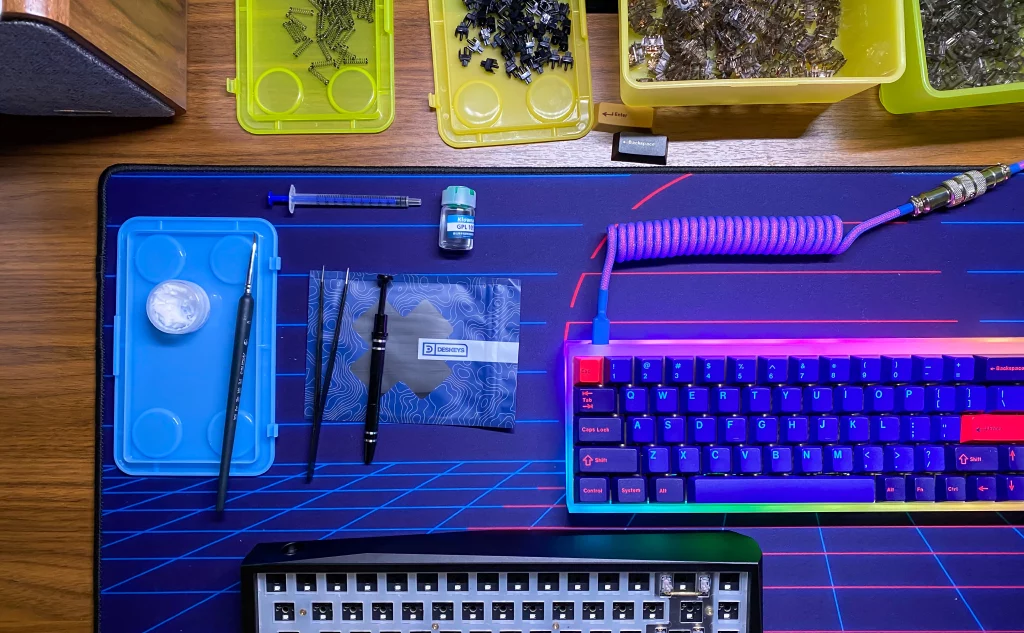
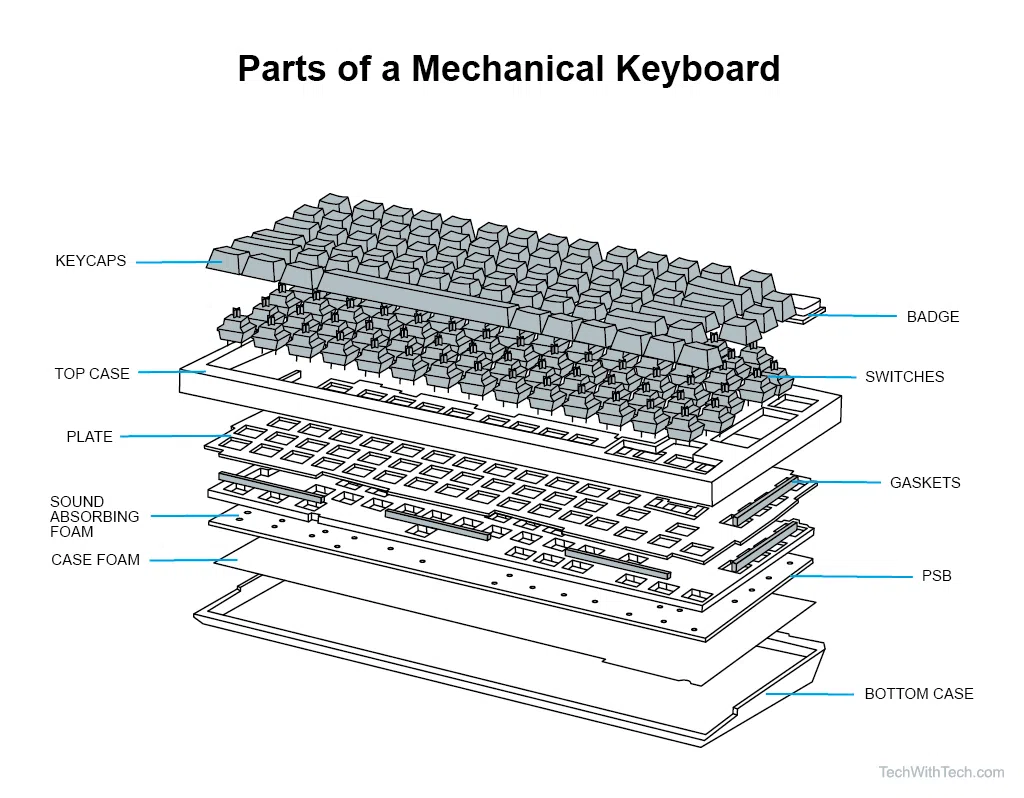
What Are the Parts of a Mechanical Keyboard, Their Names and Functions? (10 Parts)

Mechanical keyboards have become popular in the past few years.
A mechanical keyboard has many components and interconnecting parts that work together to make the mechanical keyboard experience unique and pristine.
So, what are the parts of a Mechanical keyboard that make it, well, a mechanical keyboard?
And what is the function of those parts?
Let’s jump right in.
#1 Keycaps
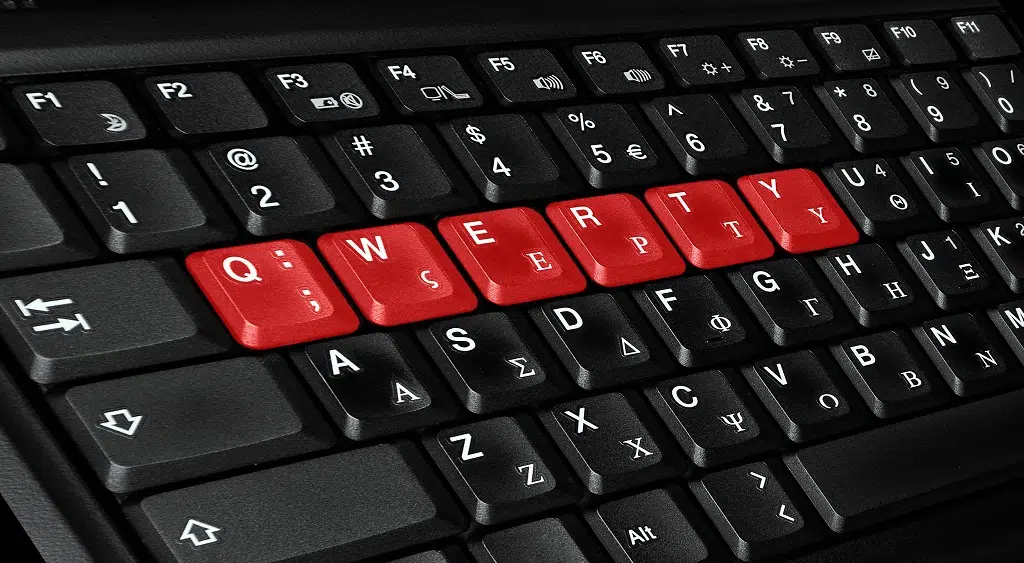
The first part of a keyboard is the keycaps.
This is the part of the keyboard that we physically touch.
The keycaps have an information function as part of the user experience.
Commonly keycaps are labeled with the alphabets and other functions they represent.
So, for example, a standard US English keyboard will have the alphabet of the English language and other signs on them like a dollar sign, etc.
Meanwhile, a keyboard from Japan will have the Japanese alphabet on it.
Some have English letters as well, while others are totally in Japanese.
What I am trying to say is that the symbols on keycaps of a mechanical keyboard can drastically change based on the geographic location of where it was made and bought.
In fact, the keyboards in countries like Germany that use a language that has almost the same alphabets as the English language can still look drastically different.
This is because German keyboards don’t use the QWERTY standard.
Instead, they use the QWERTY because, for them, this style of keyboard is more optimized for their language.
Quick side note, the QWERTY isn’t actually optimized for the English language. This standard comes from old typewriters.
QWERTY was made with the idea of placing the alphabets that were most commonly used together physically far away from each other on the keyboard.
This was done to reduce the number of times the keyboard got stuck.
So, in a way, QWERTY is unoptimized for the English language.
But this standard has been too ingrained into our writing habits, so we are stuck with QWERTY for now.
Keycaps Can Be Changed on Most Mechanical Keyboards

Coming back to Mechanical Keyboards, most mechanical keyboards allow you to easily change your keycaps.
You can replace the keycaps with fun colors or new design patterns.
A lot of people also don’t like the feel of standard keycaps and prefer to use special rubberized or even wooden keycaps.
This is the luxury of using a mechanical keyboard. It is very easy to pop out a keycap and replace it.
#2 Switches
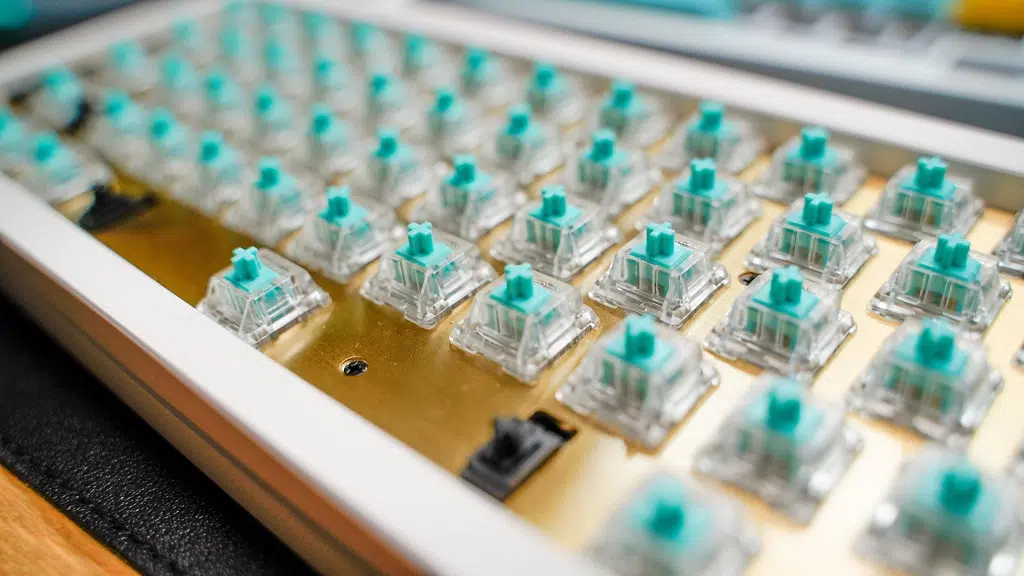
While keycaps may have been the most important part of the mechanical keyboard that you touch, the switches on the mechanical keyboard are the most important part of the keyboard that you don’t touch.
These switches are responsible for actually registering the input after you press a key and then sending this command to the PCB on the keyboard.
This PCB then sends the instructions to your computer.
Switches come in all shapes and sizes.
The most popular switches are made by a company called Cheery.
The Cheery MX mechanical switches are one of the most popular ones out there.
But there are other mechanical switches by Chinese companies like Kailh and Outemu, which offer great value for their price.
Since Cherry MX switches are known to be expensive.
The main thing you need to know about switches is the different types.
Mechanical switches are categorized into types based on their characteristics and are recognized by a particular color.
This way of categorizing switches was also popularized by Cherry.
So, for example, a Cherry MX Red is a linear switch without feedback.
Meaning it doesn’t give the user that much feedback after the user presses a key as compared to other switches.
Some users prefer feedback with each keystroke, and some don’t.
Or Cherry MX Blue, which is one of the most common types of switches you will see on a mechanical keyboard.
These switches give tactical feedback and are very loud with a very clear clicking sound.
A lot of people love this sound, and a lot of people hate it within the mechanical keyboard community.
There are many other colors and types.
And the types even extend to a subclass of silent switches that are designed to be quiet.
Most people prefer to use these in office space since a regular mechanical keyboard can be too noisy at times.
#3 Badge
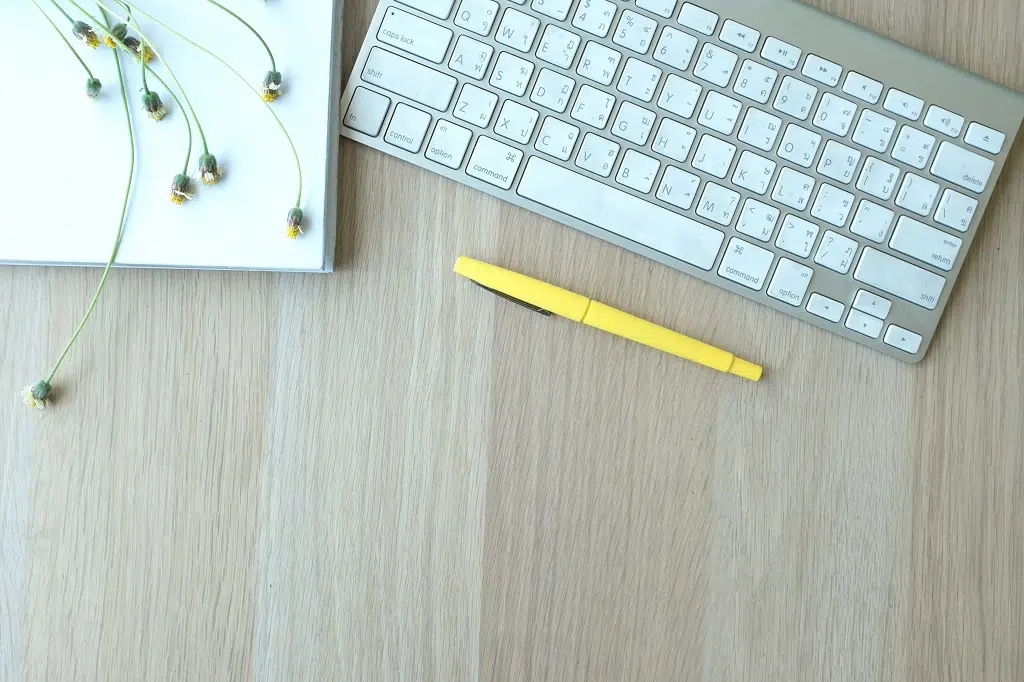
The badge on the keyboard actually offers no functional purpose.
The badge is usually a key on a corner of the keyboard that is not functional.
Most keyboards allow you to change the badge and even replace it with a fully functioning key.
But the main purpose of a badge is the style points.
So, a lot of people put a lot of time and effort into choosing or even making their own customized badges.
But like I said, these offer no actual functionality, so you should worry too much about badges when selecting your keyboard.
#4 Top Case

The top case of the keyboard is what holds everything together.
The frame has holes for mechanical switches to come out from underneath where they are connected to the PCB.
The top case protects the internals of the keyboard from the outside environment.
Top cases also come in different shapes, sizes, and materials.
Usually, the more costly keyboards have a top case made of metal like aluminum.
These feel more premium and exclusive.
Other cheaper mechanical keyboards use a material like plastics to cut costs.
But generally, they serve the same purpose.
Depending on the type of keyboard you have, the top case can be shorter or longer.
For example, the TKL keyboards that don’t have a Numpad have shorter top cases as well.
#5 Plate
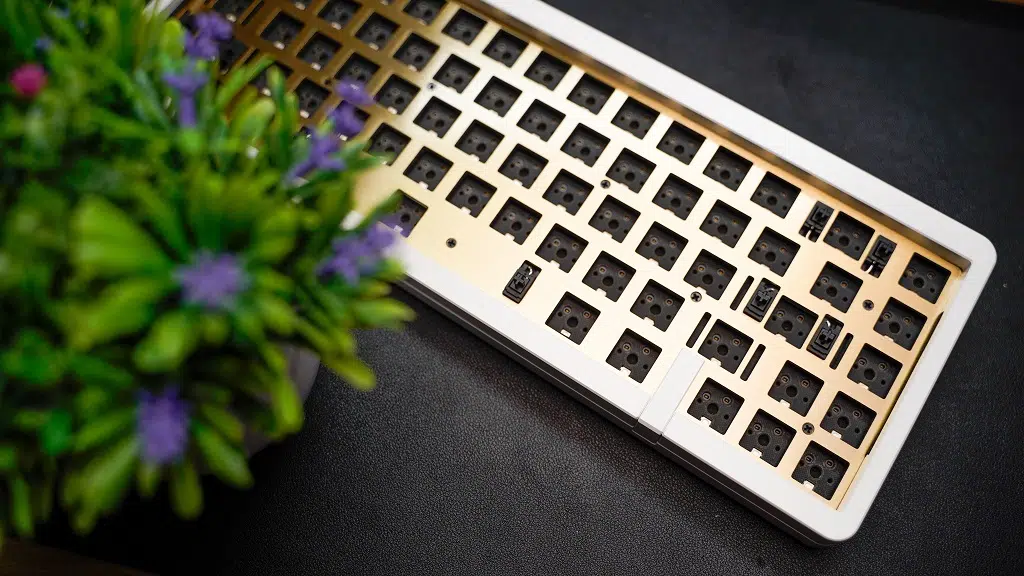
The plate is an interface between the top case and the rubber gaskets between the switches and the internals of a keyboard.
The main purpose of the plate is also to hold the keyboard together.
#6 Gasket
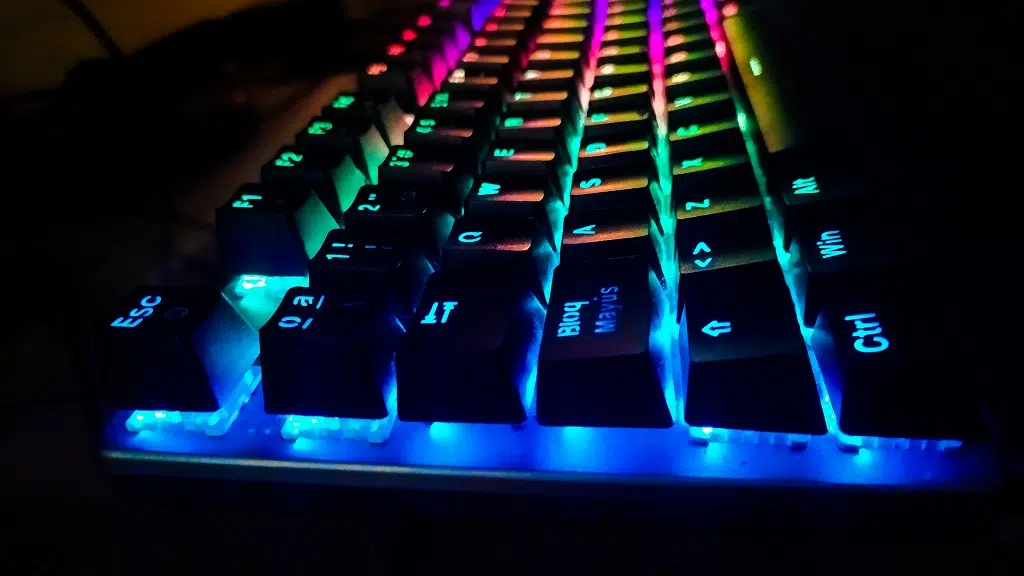
The gasket of a keyboard function is like any other gasket.
The main purpose is to isolate the internal environment from the external one.
In the case of Mechanical keyboards, this means not letting in small dust particles, spilled liquids, and Cheeto dust into the keyboard.
The Gasket layer in the keyboard protects the keyboard from all foreign elements.
This can be one layer or even multiple layers that are more expensive.
Some well-designed Mechanical keyboards are also spill-resistant because of good isolation via gaskets.
#7 PCB
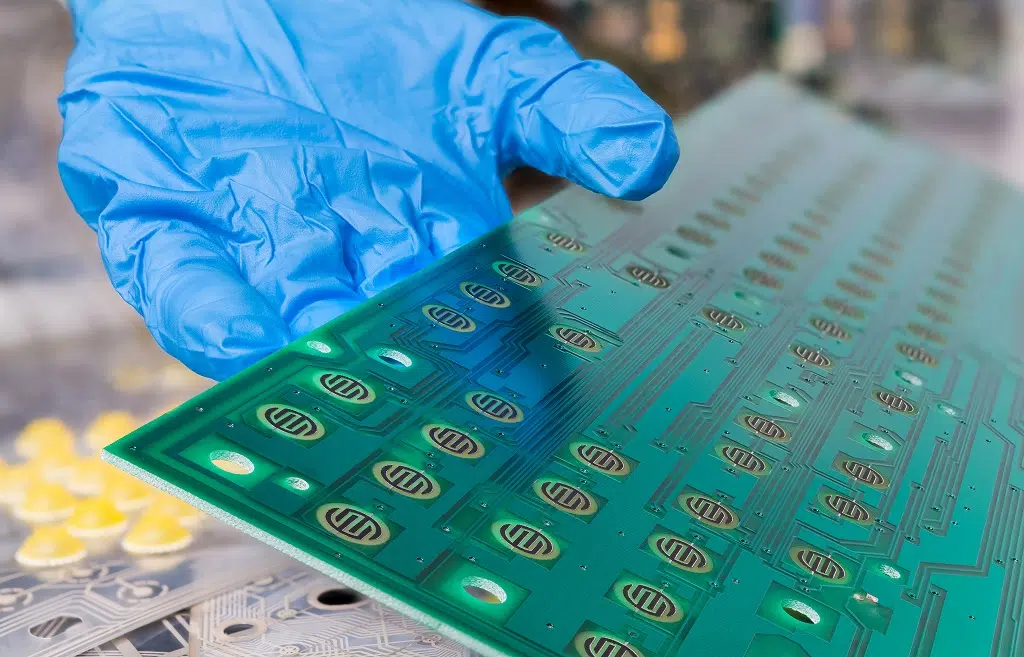
PCB stands for Printed Circuit Board.
This is basically where the magic happens.
The PCB is the electronic genius behind the keyboard.
Every key you press is actually giving its input to the computer via the PCB.
This complicated circuit board can vary between mechanical keyboards, depending on what type of keyboard you bought.
But the main function remains the same.
They convert your physical act of pressing a key into an electrical signal that is sent to your computer.
#8 Sound Absorbing Foam
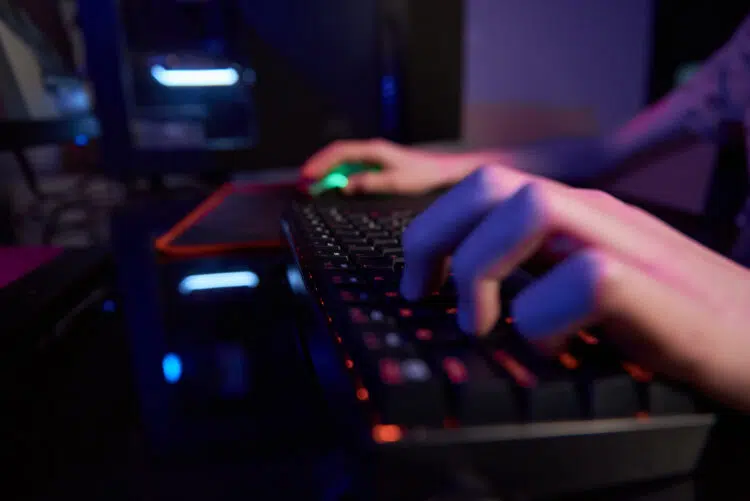
The sound-absorbing foam is placed at the bottom of the keyboard.
It is important to note that not all keyboards have sound-absorbing foam.
Usually, people that prefer quieter mechanical keyboards use a sound-absorbing foam or just keyboards with pre-equipped sound-absorbing foams.
As the name suggests, the function of this part of a mechanical keyboard is to absorb sound.
This helps control the acoustics of the mechanical keyboard.
Mechanical switches can be pretty loud and annoying otherwise, especially for people not used to such loud typing sounds.
#9 O-Rings
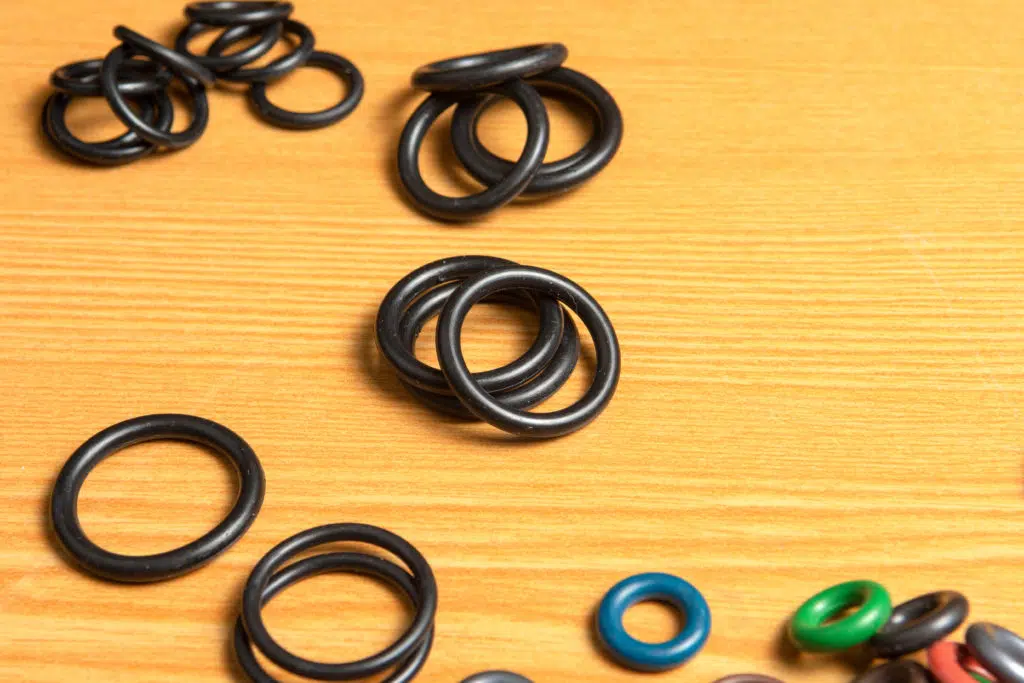
Some Mechanical Keyboards also come with small rubber rings called O Rings.
These are attached to the bottom of the keycaps, between the keycap and the mechanical switch.
Their main function is to dampen the interaction of the keycap with the mechanical switch.
This is because the main clicking sound in a mechanical keyboard comes from this interaction.
You can even buy O rings yourself if you want to reduce the sound of your mechanical keyboard.
But do note that O Rings can only go so far, and if your mechanical switches are of the louder category of switches, there isn’t a lot you can do except change the switches.
Fun fact, a lot of keyboards also allow you to change the mechanical switches on your keyboard.
But it is usually a lot harder as compared to changing keycaps.
#10 Bottom Case
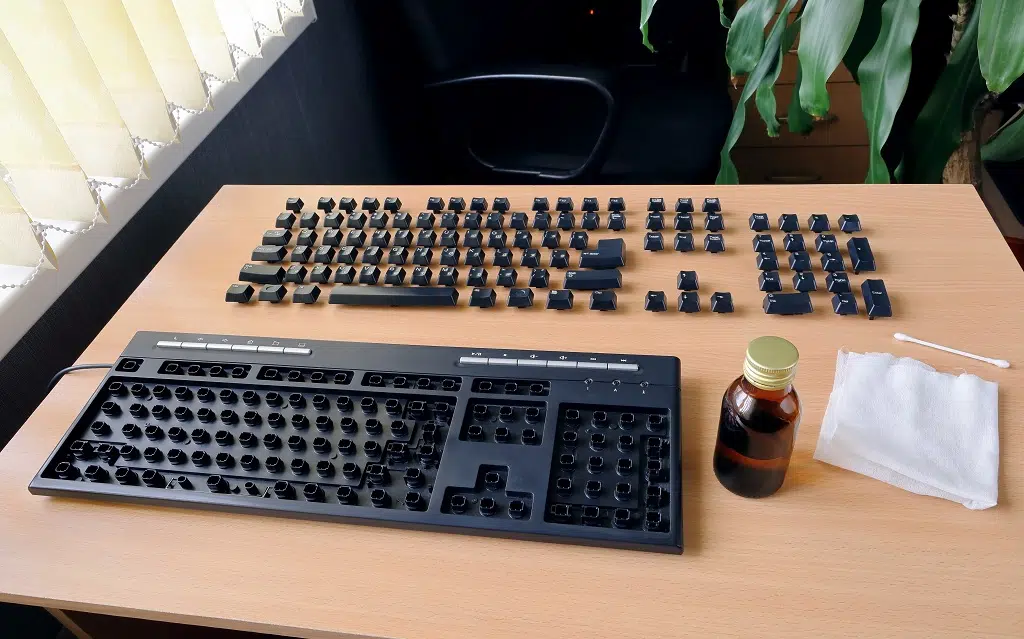
The bottom case of the keyboard is pretty much like the top case.
But instead of protecting and closing off the keyboard from the top, this part does it from the bottom side.
Both the top and the bottom combine to close the keyboard off.

